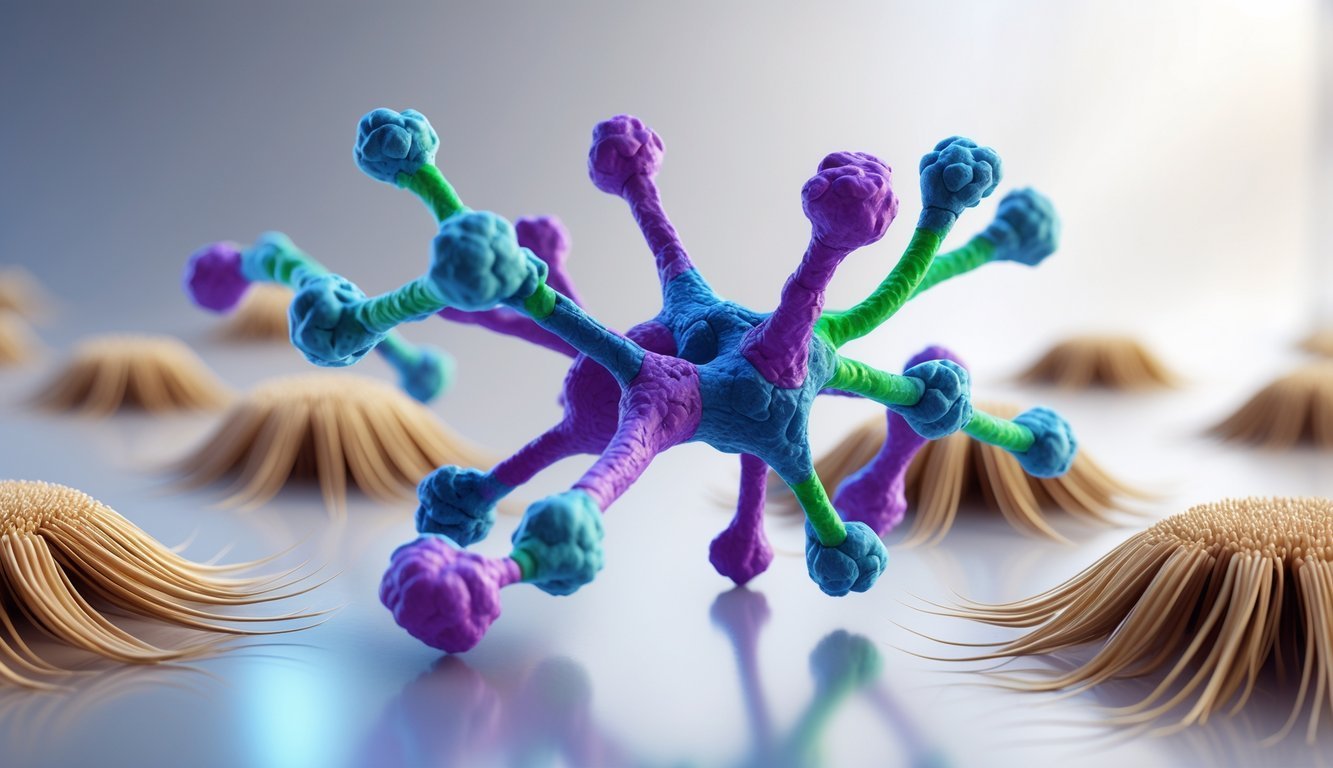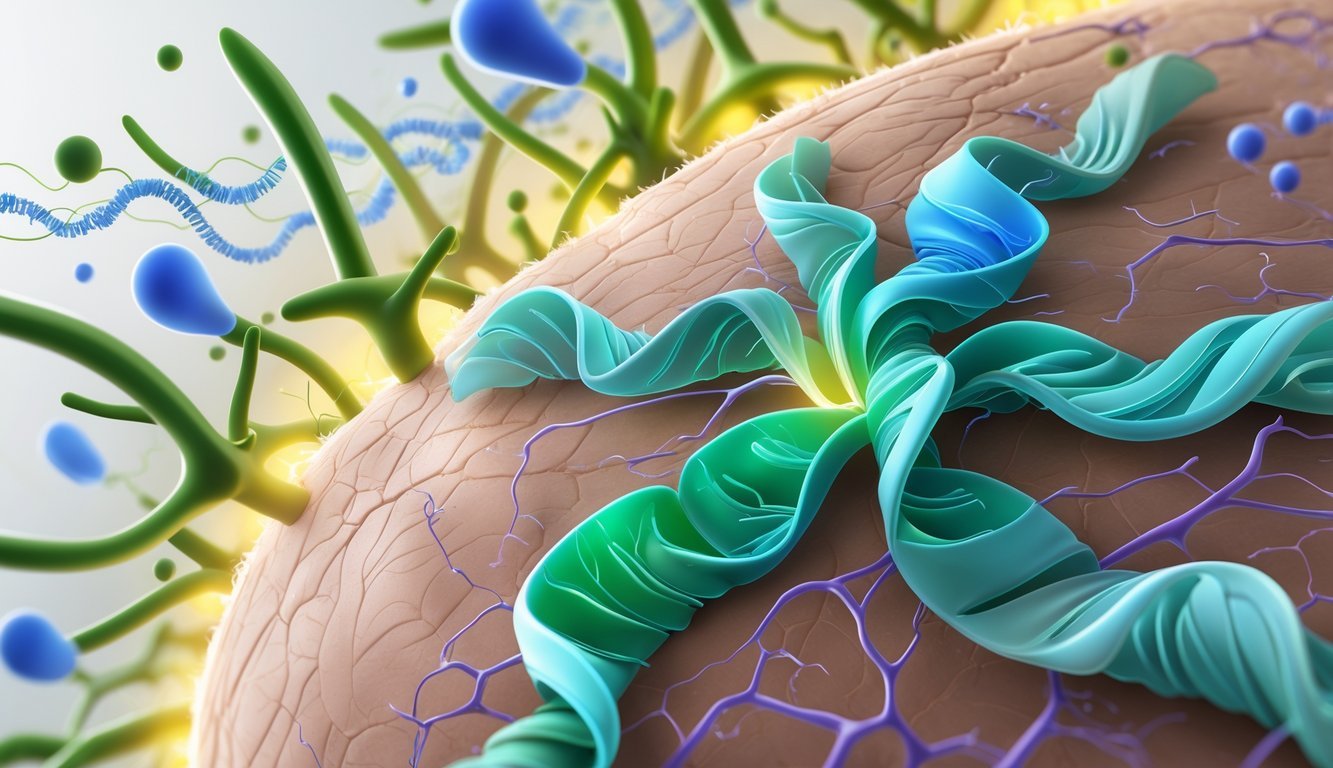PsychNewsDaily Publishers
100 Summit Drive
Burlington, MA, 01803
Telephone: (320) 349-2484
PsychNewsDaily Publishers
100 Summit Drive
Burlington, MA, 01803
Telephone: (320) 349-2484
MicroRNA molecules, such as miR-205 and miR-218-5p, promote hair follicle regeneration and could lead to innovative treatments for hair loss.

Hair loss can feel pretty discouraging, but science is finally catching up. Researchers now say they’ve found a tiny molecule called microRNA that helps hair follicles grow back by changing how the cells behave.
One of the most promising molecules, microRNA-205, supports hair regeneration by making stem cells in hair follicles softer and more active. That could open the door to new treatments for hair loss.
Earlier studies showed that certain microRNAs, like miR-218-5p, also help hair grow. These molecules influence key signals in scalp cells, nudging hair to grow where it stopped before.
Scientists are starting to really understand these tiny RNA particles, and honestly, it’s making new hair therapies seem closer than ever.
Curious about how these small molecules might change hair loss treatment? Let’s dig into the role of microRNAs in hair regeneration.

To get why new treatments work for hair regrowth, you need to know about these tiny molecules called microRNAs. They control important activities in your hair follicles and influence how your hair grows.
MicroRNAs work by deciding which genes get turned on or off, especially the ones behind hair renewal and growth.
MicroRNA, or miRNA, is a small type of non-coding RNA. Unlike messenger RNA (mRNA), which carries instructions from DNA to make proteins, miRNA doesn’t create proteins.
Instead, it controls how much protein gets made by binding to certain mRNA molecules. This stops the mRNA from making its protein or just breaks it down.
This regulation helps your cells stay balanced. In hair follicles, miRNAs guide how cells grow, divide, or die.
When miRNAs do their job, your hair follicles stay healthy and keep making new hair. If miRNAs get out of balance, hair growth tends to slow down or stop.
Some miRNAs really matter for hair growth. For example, miR-218-5p encourages hair follicle cells to grow and multiply.
Researchers found that boosting miR-218-5p helps hair follicles work better, which could mean more hair regrowth.
Other miRNAs, like miR-24 and miR-125b, do the opposite—they slow hair growth by pushing hair follicles into regression.
A few miRNAs also affect dermal papilla (DP) cells. These DP cells send signals that tell hair follicle stem cells to grow new hair.
Your hair’s health actually depends on these miRNAs keeping DP cells active and in good shape.
Gene expression just means which genes are turned on and making proteins in a cell. miRNAs act like switches, turning off some genes by blocking mRNA.
That’s especially important in your hair follicle stem cells and dermal papillae because it controls cell proliferation—basically, how quickly these cells multiply.
By managing gene expression, miRNAs help balance hair growth and loss cycles.
If a miRNA turns down the genes that slow cell growth, it can help your hair grow back faster. Scientists are figuring out which miRNAs matter most so they can find new ways to support hair regrowth and prevent hair loss.

Researchers have recently found some important microRNA molecules that control hair follicle growth. These discoveries could really shake up how we treat baldness and androgenetic alopecia (AGA).
Scientists are testing new ways to deliver these molecules—think creams, lotions, and even advanced stuff like cell therapy and exosomes.
One standout microRNA is miR-218-5p. It helps hair follicles grow, at least in mouse models.
When researchers increased miR-218-5p, hair grew back more effectively. Lowering this microRNA made hair follicles stop working right.
Other microRNAs, like miR-205, have also been linked to hair regrowth. These molecules act as biomarkers and targets for new hair loss treatments.
They influence scalp cells, especially papilla cells, which are crucial for hair follicle development.
You might hear about these microRNAs affecting proteins like osteopontin, a player in tissue repair and hair restoration.
Scientists are working on hair loss treatments using microRNA molecules in forms like lotions and creams. The idea is to deliver microRNAs right to your scalp, helping hair follicles reactivate without harsh side effects.
These new treatments could be an alternative to things like minoxidil. Instead of just boosting blood flow or giving short-term growth, microRNA-based drugs aim to tackle the root causes of hair loss.
Some small molecule drugs that activate or mimic microRNA function are in the works. They might even get paired with things like microneedling or low-level laser therapy to help your scalp absorb them better.
Some cutting-edge therapies use exosomes and cell therapy to deliver microRNAs and growth factors to damaged hair follicles.
Exosomes are these tiny extracellular vesicles that carry signals—including microRNAs—to jumpstart hair regeneration.
Cell therapy might mean transplanting or activating papilla cells to repair and revive hair follicles. This is part of regenerative medicine, which aims to rebuild damaged scalp tissue.
Researchers are also testing activators that ramp up microRNA activity to boost follicle function. Some experimental treatments use microspheres or platelet-rich plasma (PRP) injections to help with delivery and effectiveness.
These approaches are still being tested for safety and possible adverse effects, but honestly, they look more promising than old-school hair loss treatments.

You probably have questions about how these new microRNA treatments work, how safe they are, and what kind of progress scientists have made. Here’s a quick rundown of common questions about cost, effectiveness, and where research stands.
Researchers haven’t nailed down all the side effects yet because these treatments are still in the study phase. Some possible risks include skin irritation or allergic reactions.
We need more research to know about long-term effects.
There’s no set price right now since these treatments are mostly experimental. If they hit the market, costs will probably depend on the method and where you get treated.
Most of the research has been done in labs or on animals. Human trials are still rare or just starting.
Scientists are working on testing safety and effectiveness in people.
MicroRNA-205 looks promising for promoting hair growth by activating certain cell processes. But it’s still in the experimental stage, so you can’t get it as a treatment yet.
Researchers have found microRNAs like miR-218-5p that may help hair regrow. These discoveries are new, and treatments based on them aren’t on the market yet.
Scientists recently discovered specific microRNAs that trigger hair follicle regeneration pathways.
This discovery might open the door to new drug development down the line.